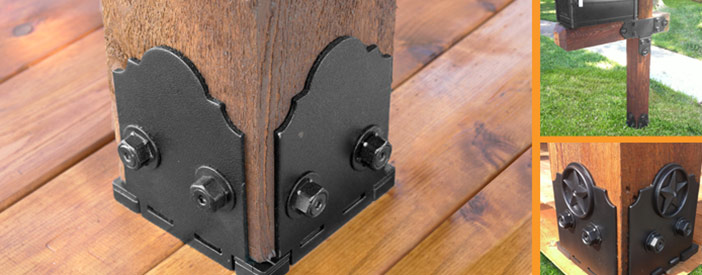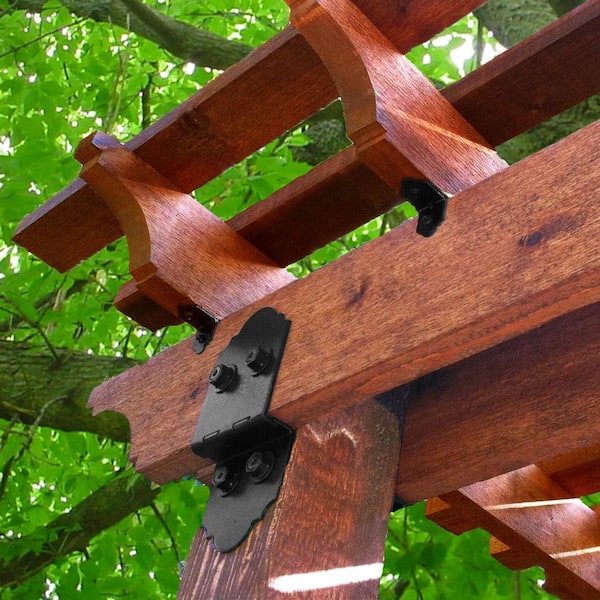Welcome to the world of decorative wood ties! If you’re looking to enhance your garden, patio, or landscape design, you’ve come to the right place. Decorative wood ties provide not just functionality but also a beautiful aesthetic appeal that can transform any outdoor space. Through personal experience and in-depth research, I’ve crafted this comprehensive guide to help you make the best choice for your home.
What Are Decorative Wood Ties?
Decorative wood ties, commonly referred to as landscape timbers or railroad ties, are pieces of lumber used in landscaping and gardening projects. They serve various purposes, including:
- Edging for garden beds
- Retaining walls
- Walkways and pathways
- Decorative borders
Types of Decorative Wood Ties
Understanding the different types of decorative wood ties available can help you make an informed decision. Here are some of the most common types:
1. Treated Wood Ties
Treated wood ties are chemically treated to resist decay and insect infestation. They are often used in landscapes where moisture or pests are a concern.
2. Untreated Wood Ties
These ties are made from natural wood without chemical treatment. They provide a rustic look but may have a shorter lifespan compared to treated wood.
3. Reclaimed Wood Ties
Reclaimed wood ties are made from recycled wood, offering an eco-friendly option. They often come with unique character and history, adding a charming touch to any garden.
Benefits of Using Decorative Wood Ties
Using decorative wood ties in your landscaping project comes with numerous benefits, including:
Enhanced Aesthetic Appeal
Wood ties add warmth and a natural look to your landscape. Whether you’re going for a rustic, modern, or traditional style, there’s a wood tie to match your vision.
Functional Versatility
These wood ties serve multiple functions, from creating borders to building raised beds, making them a versatile choice for various projects.

Diverse Design Options
With a variety of sizes, shapes, and finishes available, you can easily customize the look of your outdoor space.
Choosing the Right Decorative Wood Ties
When selecting decorative wood ties, consider the following factors:

1. Purpose of Use
Are you using them for edging, retaining walls, or another purpose? Understanding your need will dictate the type of wood tie you should select.
2. Wood Type
Choose between treated, untreated, or reclaimed wood based on your design preference and environmental conditions.

3. Budget
Prices can vary significantly, so determine your budget beforehand.
Comparison Table of Decorative Wood Ties
| Type | Durability | Cost | Aesthetic Appeal | Best For |
|---|---|---|---|---|
| Treated Wood Ties | High | $$/$$$ | Classic | Moisture-prone areas |
| Untreated Wood Ties | Medium | $$ | Rustic | Dry regions |
| Reclaimed Wood Ties | Variable | $$$ | Unique | Eco-friendly projects |

Installation Tips for Decorative Wood Ties
Installing decorative wood ties can be a simple DIY project if you follow these steps:
1. Planning Your Layout
Before you start, plan the layout of your project. Sketch it out, detailing where you want to place each wood tie.

2. Clearing the Area
Remove any vegetation and debris where the ties will be installed. A clean area ensures better stability.
3. Leveling the Ground
Ensure the ground is level for a stable installation. Use a shovel or rake as needed.

4. Laying the Ties
Start laying the ties according to your plan. Ensure they are straight and level with each other.
5. Securing the Ties
Use landscape stakes or rebar to secure the ties in place, especially if using them for a retaining wall.
Pros and Cons of Decorative Wood Ties
Pros
- Beautiful aesthetic appeal
- Versatile for various landscaping projects
- Environmentally friendly options available
- Easy to install
Cons
- Can be affected by rot and insects, especially untreated wood
- Requires maintenance over time
- Cost can be a factor for high-quality wood ties
Frequently Asked Questions (FAQs)
What is the lifespan of decorative wood ties?
The lifespan can vary, typically ranging from 5 to 20 years depending on the type of wood, treatment, and environmental conditions.
Can I use decorative wood ties for a raised garden bed?
Yes, decorative wood ties are a popular choice for raised garden beds, providing a clean and organized look while keeping soil contained.
How do I maintain my decorative wood ties?
Regularly inspect for signs of rot or insect damage, and apply wood preservatives or stains as needed to extend their lifespan.
Are reclaimed wood ties safe for landscaping?
Yes, reclaimed wood is generally safe for landscaping; however, it’s best to ensure that the source wood has not been treated with harmful chemicals.
Can I paint or stain decorative wood ties?
Absolutely! Painting or staining can enhance their look and provide additional protection against the elements.
Conclusion
In conclusion, decorative wood ties are an excellent addition to any outdoor space, combining beauty with functionality. With various options available, you can find the perfect ties to suit your needs and style. Whether you’re installing them yourself or hiring a professional, the transformation they offer is sure to impress. Take the plunge and elevate your outdoor space with decorative wood ties today!